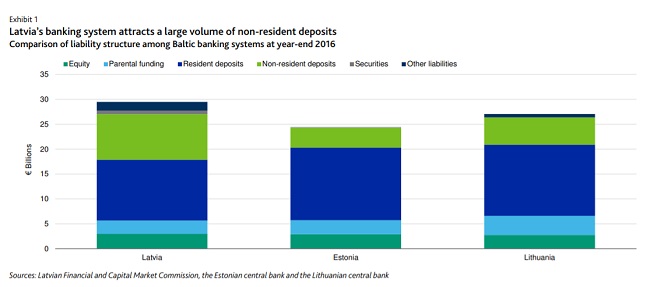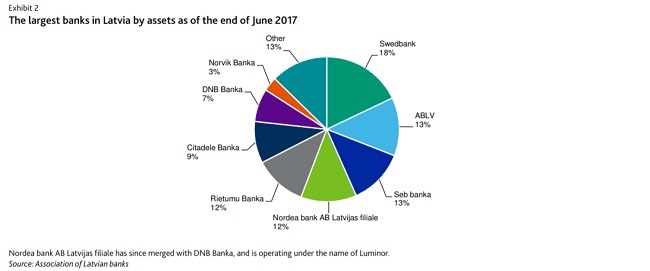Analytics, Banks, EU – Baltic States, Financial Services, Latvia, Rating
International Internet Magazine. Baltic States news & analytics
Thursday, 25.04.2024, 19:56
High-profile conduct incidents shake Latvia’s banking system, a credit negative
 Print version
Print versionThe ABLV announcement followed the ECB on 19 February
halting all withdrawals from the bank after the US Treasury’s Financial Crimes
Enforcement Network on 13 February found that ABLV had been involved in
transactions with North Korea in 2017 and had “institutionalized” money
laundering. The findings prompted customers to withdraw funds from the bank,
creating a liquidity shortage. The Central Bank of Latvia subsequently granted
ABLV €297.5 million in emergency loans, short of the €480 million that ABLV had
applied to borrow.
Separately, Central Bank Governor Ilmars Rimsevics was detained earlier this month in an
anti-corruption investigation and is currently prohibited from conducting his
duties as governor.
Before ABLV’s failure, the bank proceeded with a planned €80
million repayment of two maturing bonds on 22 February, in an attempt to avoid
a default on its obligations. The repayments are to be held in accounts at other
banks.
Latvia’s banking system mainly comprises two groups of
banks. One group is funded through domestic deposits and their Nordic parent
banks, which primarily lend to domestic borrowers. The other is primarily
funded through non-resident deposits and has limited domestic lending.
Approximately 30% of the banking system’s liabilities are made up of
international non-resident deposits (see Exhibit 1), a significant margin over
other Baltic states (Estonia and Lithuania), which makes Latvia’s banking system
vulnerable to negative external perceptions.

Although the developments are credit negative for all banks,
those that rely more heavily on non-resident deposits to fund their operations
are the most vulnerable, including ABLV, Rietumu
Banka, and Norvik Bank (see
Exhibit 2). ABLV’s deposits from residents in the Commonwealth of Independent
States (CIS) comprised 83.9% of deposits at 30 June of 2017. Rietemu Banka has limited disclosures on
non-resident deposits, but its business model is geared toward affluent
international individuals, and as of year-end 2016 62% of its total lending was
to borrowers in countries that are not part of the Organisation for Economic
Co-operation and Development (OECD), which we believe infers a high degree of
non-resident deposits. Norvik Bank’s
non-resident deposits were 57.8% from non-OECD countries at year-end 2016,
including 25.3% from Russia.

Among the Latvian financial institutions we rate, SC Citadele Banka (Ba2 positive, b11 )
and JSC Development Finance Institution Altum
(Baa1 stable) are well positioned to withstand pressure that could arise
from these events. Citadele in recent
years has grown primarily in Baltic countries, focusing on consumer and small
and midsize enterprise lending, while meaningfully reducing exposures to
countries that comprise the Commonwealth of Independent States (CIS) and being
restrictive in accepting new non-resident deposits. At the end of December
2017, its deposits from Baltic countries were 64% of total deposits, while
deposits from CIS countries were 7.6%, and liquid assets over tangible banking
assets exceeded 52%. Altum is a
development institution mainly funded by state and European Union programmes.








 «The Baltic Course» Is Sold and Stays in Business!
«The Baltic Course» Is Sold and Stays in Business!

